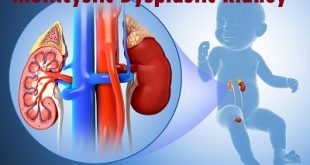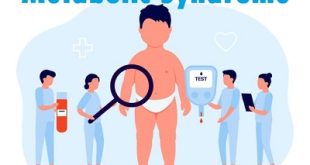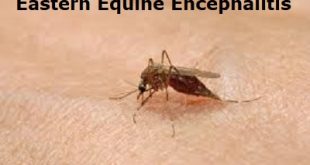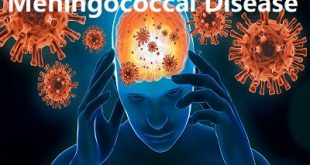What is monkeypox?
Monkeypox is a rare disease caused by the monkeypox virus. It leads to rash and flu-like symptoms. Like the better known virus that causes smallpox, it is a member of the family called orthopoxvirus. It was discovered in 1958 when two outbreaks of a pox-like disease occurred in groups of monkeys being used for research. It’s spread mainly through human contact with infected rodents, but can sometimes be spread through skin-to-skin contact with an infected person. There are two known types (clades) of monkeypox virus — one that originated in Central Africa and one that originated in West Africa. The current world outbreak (2022) is caused by the less severe West African clade.
Pathophysiology
The monkeypox virus is a member of the genus orthopox (family Poxviridae); other members include cowpox, vaccinia, and variola (smallpox) viruses. It is a zoonotic virus with primary transmission believed to occur through direct contact with infected animals or possibly by ingestion of their inadequately cooked flesh. Inoculation may be from cutaneous or mucosal lesions on the animal, especially when the skin barrier is compromised secondary to bites, scratches, or other trauma. The infection was first seen in laboratory monkeys in 1958, thus, the name monkeypox, although rodents are believed to be the major reservoir in Africa. A 2010 study reaffirmed that several species of forest-dwelling rodents are at risk for orthopoxvirus (including monkeypox) infection. People living in or near the forested areas may have indirect or low-level exposure, possibly leading to subclinical infection.
Secondary, or human-to-human, disease transmission was found to be another possible route in an outbreak in the DRC in 1996-1997. Studies of this outbreak suggested that within households, monkeypox was secondarily transmitted to 8-15% of human contacts. Prior to this, monkeypox was not identified as an important worldwide health problem because human infection rates were not known to play a significant role in the pathogenesis. Analysis of the 2003 US outbreak implicates animal-to-animal and animal-to-human transmission as the significant route of transmission. However, in the 2003 US outbreak, clear exposure to an infected animal could not be identified in 1 case, and, therefore, human-to-human transmission could not be excluded.
Human-to-human transmission has been confirmed as a major factor in the 2022 outbreak in multiple areas across the world. While many of the patients are men who have sex with men, sexual transmission of monkeypox has not been confirmed.
How it spreads or transmitted? (Causes)
Monkeypox spreads in different ways. The virus can spread from person-to-person through:
- Direct contact with the infectious rash, scabs, or body fluids
- Respiratory secretions during prolonged, face-to-face contact, or during intimate physical contact, such as kissing, cuddling, or sex
- Touching items (such as clothing or linens) that previously touched the infectious rash or body fluids
- Pregnant people can spread the virus to their fetus through the placenta
It’s also possible for people to get it from infected animals, either by being scratched or bitten by the animal or by preparing or eating meat or using products from an infected animal.
Monkeypox can spread from the time symptoms start until the rash has fully healed and a fresh layer of skin has formed. The illness typically lasts 2-4 weeks. People who do not have its symptoms cannot spread the virus to others. At this time, it is not known if monkeypox can spread through semen or vaginal fluids.
What are risk factors for monkeypox?
- Monkeypox is a relatively uncommon disease. Risk factors include animal bites and scratches from infected animals (mainly African rodents or monkeys) or from other rodents (like prairie dogs) that have had contact with African animals infected with the virus. People should avoid eating any meat from such animals is advised.
- Recent studies have shown that it can infect several species of mammals, even though the species had never been associated with the virus in their normal environment.
- Reduce or prevent person-to-person transfer, although infrequent, by avoiding direct physical contact with the patient and having the patient’s caregivers wear gloves and face masks.
- Avoid skin contact and clothing with potentially infected people.
- In Spain, one outbreak (about 30 cases) was traced to a Madrid sauna that is popular with gay men. However, monkeypox is not considered a sexually transmitted disease; it may occur more frequently in sexually active groups because of skin to skin contact during sex.
Symptoms of monkeypox
It typically takes between 1 and 2 weeks after exposure to get sick from the this virus, but it could take as long as 3 weeks.
With the recent outbreak, doctors have noticed a few newer symptoms that don’t quite match the typical description of monkeypox.
Besides the usual signs, new monkeypox symptoms may include:
- Painful rash that may start out on your pubic area, genitals, or around your anus
- Fewer bumps (one to two bumps)
- Bumps that look like blisters, pus-filled bumps, or open sores
- Bumps in different stages, even when they’re found around the same area
- Some people may not get a fever or flu-like symptoms before the rash. Some people don’t get a fever at all.
In some cases, people have reported other symptoms such as pain around the anus, the need to poop even though your gut is empty (tenesmus), bleeding in the lower part of large intestine (rectum), and painful inflammation of the anus and rectum lining (proctitis). Doctors have linked these symptoms to the painful bumps in the area.
Experts are not sure what’s causing the shift in symptoms. But research is ongoing. In the meantime, if you notice these symptoms, tell your doctor right away.
Symptoms may also include any of these that were seen in past outbreaks:
- Fever
- Tiredness
- Headache
- Aching muscles
- Chills
- Backache
- Sore throat
- Dry cough
- Swollen lymph nodes
- Trouble breathing (in serious cases)
In previous outbreaks, the following symptoms usually were also seen, and may still be seen now:
- One to 3 days after your fever starts, a rash shows up. It typically starts on your face before spreading to other parts of the body.
- The rash is more common on the hands, feet, arms, and legs. It also tends to follow a particular pattern: Flat, round lesions (macules) grow into slightly raised bumps (papules), then into bumps filled with clear fluid (vesicles).
- People have usually reported anywhere from 10 to 150 bumps on their skin. These then change into bumps with yellowish fluid (pustules) that crust over and fall off. Report any of these symptoms to your doctor right away.
You can spread it to others starting a day before the rash shows up. You’re contagious for up to 21 days after your first symptoms, or until your lesions have scabbed over and you don’t have any other symptoms.
What are the complications of monkeypox?
Monkeypox complications can include:
- Severe scars on the face, arm and legs
- Blindness
- Other infections
- Death, in rare cases
Who should be screened for monkeypox and how is it diagnosed?
It’s important to get screened for monkeypox if you:
- live with people who have developed monkeypox
- work around people who have monkeypox
- have traveled to a country where monkeypox is more common
- have interacted with imported animals
- received a bite or scratch from infected animals
- ate partially cooked meat or other products of infected animals
- visit or live near a tropical rainforest
Doctors diagnose monkeypox using several methods:
- Medical history. This includes your travel history, which can help your doctor determine your risk.
- Lab tests. This involves testing the fluid from lesions or dry scabs. These samples can be checked for the virus using a polymerase chain reaction (PCR) test.
- Biopsy. A biopsy involves removing a piece of skin tissue and testing it for the virus.
Blood tests are not usually recommended. That’s because the monkeypox virus stays in the blood for a short time. Therefore, it’s not an accurate test for diagnosing monkeypox.
Interim Clinical Guidance for the Treatment
Many people infected with monkeypox virus have a mild, self-limiting disease course in the absence of specific therapy. However, the prognosis for monkeypox depends on multiple factors, such as previous vaccination status, initial health status, concurrent illnesses, and comorbidities among others. Patients who should be considered for treatment following consultation with CDC might include:
People with severe disease (e.g., hemorrhagic disease, confluent lesions, sepsis, encephalitis, or other conditions requiring hospitalization)
People who may be at high risk of severe disease:
- People with immunocompromise (e.g., human immunodeficiency virus/acquired immune deficiency syndrome infection, leukemia, lymphoma, generalized malignancy, solid organ transplantation, therapy with alkylating agents, antimetabolites, radiation, tumor necrosis factor inhibitors, high-dose corticosteroids, being a recipient with hematopoietic stem cell transplant <24 months post-transplant or ≥24 months but with graft-versus-host disealse or disease relapse, or having autoimmune disease with immunodeficiency as a clinical component)
- Pediatric populations, particularly patients younger than 8 years of age
- People with a history or presence of atopic dermatitis, persons with other active exfoliative skin conditions (e.g., eczema, burns, impetigo, varicella zoster virus infection, herpes simplex virus infection, severe acne, severe diaper dermatitis with extensive areas of denuded skin, psoriasis, or Darier disease [keratosis follicularis])
- Pregnant or breastfeeding women
- People with one or more complications (e.g., secondary bacterial skin infection; gastroenteritis with severe nausea/vomiting, diarrhea, or dehydration; bronchopneumonia; concurrent disease or other comorbidities)
People with monkeypox virus aberrant infections that include accidental implantation in eyes, mouth, or other anatomical areas where monkeypox virus infection might constitute a special hazard (e.g., the genitals or anus)
How is monkeypox treated?
There’s currently no treatment for monkeypox. However, it is self-limiting, which means it can get better without treatment.
Some medications can be used to control an outbreak and prevent the disease from spreading. They include:
- vaccinia vaccine (smallpox vaccine)
- vaccinia immune globulin (VIG)
- antiviral medication (in animals)
According to the World Health Organization (WHO), the smallpox vaccine is approximately 85 percen effective in preventing the development of monkeypox. If you received the smallpox vaccine as a child and contract the monkeypox virus, your symptoms may be mild.
In 2019, a vaccine was approved to prevent both smallpox and monkeypox. But it’s still not widely available to the public.
Can monkeypox be prevented?
There are steps you can take to help prevent monkeypox:
- Avoid close, skin-to-skin contact with the monkeypox rash. So, while a person is sick with monkeypox:
- Do not touch their rash or scabs.
- Do not kiss, hug, cuddle, or have sex with them.
- Do not share eating utensils or cups with them.
- Do not touch the bedding, towels, or clothing of a person who has monkeypox.
- Wash your hands often with soap and water or use an alcohol-based hand sanitizer, especially after contact with sick people.
- In Central and West Africa, avoid contact with animals that can spread monkeypox virus, such as rodents and primates. Also, avoid sick or dead animals, as well as any bedding or other materials they have touched.
If you are sick with monkeypox, you should isolate at home. If you have an active rash or other symptoms, you should be in a separate room from your family members and pets when possible.
 Diseases Treatments Dictionary This is complete solution to read all diseases treatments Which covers Prevention, Causes, Symptoms, Medical Terms, Drugs, Prescription, Natural Remedies with cures and Treatments. Most of the common diseases were listed in names, split with categories.
Diseases Treatments Dictionary This is complete solution to read all diseases treatments Which covers Prevention, Causes, Symptoms, Medical Terms, Drugs, Prescription, Natural Remedies with cures and Treatments. Most of the common diseases were listed in names, split with categories.







